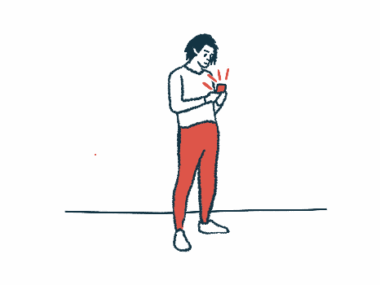Wellinks’ Mobile App Easy to Use, Valuable for Managing COPD: Study
Written by |

Older adults with chronic obstructive pulmonary disease (COPD) found the Wellinks health mobile app useful and valuable for managing the disease and treatment, a small pilot study suggests.
According to study authors, the Wellinks platform may aid patient engagement and outcomes.
“It’s exciting to see this population of chronically ill patients successfully engage with multiple devices tied to one common mobile app capable of synthesizing and relaying the data to the physician and care team,” Brian D Gelbman, MD, the study’s lead investigator and an associate clinical professor of medicine at Weill Cornell Medical College and New York Presbyterian Hospital, said in a press release.
The study, “An Integrated, Multimodal, Digital Health Solution for Chronic Obstructive Pulmonary Disease: Prospective Observational Pilot Study,” was published in JMIR Formative Research.
Digital health is increasingly recognized as a powerful tool for both healthcare providers and patients.
“We believe that integrating software, devices, and human-powered virtual care into one solution can play an important role in successful COPD management. These findings validate our approach and signal that interconnected health tools can successfully engage and delight patients, even those who are often assumed to be on the other side of the ‘digital divide’,” Alex Waldron, CEO of Wellinks, said. “We’re now building from this foundation by simultaneously conducting additional clinical research, furthering product development, and bringing Wellinks to market.”
For those with chronic disorders, such as COPD, digital health tools enable data — such as information on medication adherence and symptoms, as well lung function and oxygen levels — to be collected remotely in real time from multiple devices and shared with healthcare providers, allowing for more immediate chronic disease management.
“Healthcare is experiencing a major revolution in the care of patients with chronic disease through the introduction of mobile health apps and virtually enabled care. For COPD patients, who have unique needs and challenges, it is essential to properly test and validate these new resources,” Gelbman said.
The eight-week pilot study, conducted by Gelbman and Carol R Reed, MD, at Wellinks, evaluated COPD patients’ ability to use the mobile app, called Wellinks mHealth, which is available on the iPhone.
The study enrolled 19 COPD patients — 10 women and nine men, with an average age of 79.6 — who were followed at the Weill Cornell Medical Center from January to May 2021. All were receiving treatment that included a nebulizer and 10 of them (53%) had severe COPD.
Patients received a kit that included the company’s Flyp nebulizer, the Smart One spirometer, the Nonin pulse oximeter, the Wellinks mHealth app, and instructions on how to use all the devices. A spirometer measures the volume of inhaled and exhaled air, while a pulse oximeter is a noninvasive device that measures blood oxygen levels.
Participants were asked to register their daily symptoms and medication use via the mobile app. Spirometry, nebulizer, and pulse oximeter data were recorded automatically and sent to the attending physician in a monthly report.
All patients achieved the goal of having one pulse oximetry reading a week (average use of 4.2 times/week), and most met the goal of at least one spirometry reading per week (average use of 2.5 times/week).
On average, patients registered their medication on the Wellinks app nine times a week, nebulizer use 1.9 times per week, and symptoms 1.2 times per week.
A strong correlation was seen between the percentage of forced expiratory volume in one second (FEV1) and peak flow measurements recorded in the spirometer, compared with measurements recorded by a physician at an office visit. FEV1 is a lung function parameter that measures how much air a person is able to exhale in one second after a deep breath, while peak flow measures how quickly air can be blown out of the lungs.
Sixteen patients answered the satisfaction survey. Almost all (94%) either agreed or strongly agreed that the Wellinks app was easy to use, and 81% said that is was valuable for managing COPD.
Also, the majority (94%) agreed that conducting spirometry and pulse oximetry measurements at home had value. More than half (75%) expressed interest in adding a message system from a physician or care team to the app.
Patients did not find the app enhanced their knowledge of COPD or their connection with their doctor. Patient overall satisfaction using the mobile app was measured by the Net Promoter Score (NPS) at the end of the study. Ranging from -100 (worst outcome) to 100 (the best outcome), the overall NPS in this study was 59.
The study showed that “patients with COPD engaged with the Wellinks mHealth platform avidly and consistently over the 8-week period, and that patient satisfaction was high,” the researchers wrote.
“The Wellinks mHealth platform was considered useful and valuable by patients, and can assist clinicians in improved, timely decision making for better COPD management,” they wrote.
A 24-week study conducted in partnership with the COPD Foundation’s COPD Patient-Powered Research Network (COPD PPRN), will assess the benefits of Wellinks’ platform in adults with COPD. Those interested in this study need to join COPD PPRN, and can do that here.






